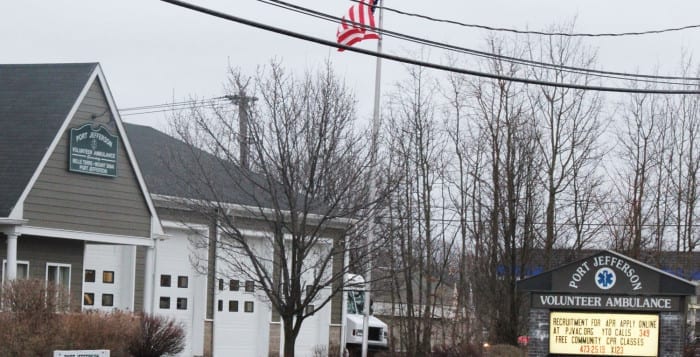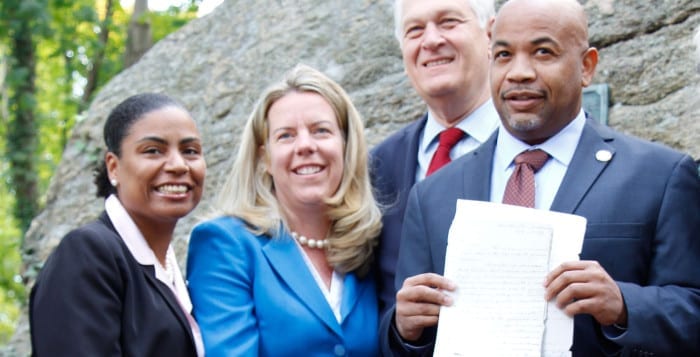A presentation about the service of the Port Jefferson Volunteer Ambulance Company devolved into an argument about perceived unfair billing practices on Monday night, with residents, village officials and the ambulance company’s deputy chief going back and forth for an hour.
A few villagers are in a lather over the process for recouping expenses after an ambulance ride through a billing program that began a handful of years ago. Faced with rising costs in the ambulance district — which also serves Belle Terre and Mount Sinai — Port Jefferson Village officials authorized the emergency medical organization to bill insurance companies for service within their jurisdiction, with the funds offsetting local ambulance taxes.
The friction that heated up Monday night’s Port Jefferson Village Board of Trustees meeting built around cases when an insurance company denied a claim or the patient had a hefty deductible — thus obligating the ambulance service and its third-party billing company to send a tab to that patient, according to PJVAC Deputy Chief Rob Stoessel.
Two residents who received such bills, Monica Williams and Mary Moore, expressed their dissatisfaction over the matter, saying the taxes they pay each year to the ambulance district should be enough and also complaining about the price tag.
“I’m paying my ambulance district tax,” Williams said. “I don’t really think that any village resident … should be looking at a bill like that. It’s surprising. It’s disappointing.”
She called it “being billed for the same thing twice.”
Before insurance, Stoessel said, the fee on a call for emergency medical care is $900, with an additional $18 for each mile the ambulance transports a patient.
“We went based on other agencies, other 911 services throughout the region,” he said about how the ambulance company arrived at that figure. “We went on what it cost us to provide the service,” including non-medical expenses like gasoline.
The deputy chief said the ambulance service and its billing company is required to make a “good faith attempt” to solicit deductibles from patients or whatever costs are associated with a trip that an insurance company denies coverage for.
According to comments from the residents, Williams was denied Medicare coverage for her treatment and Moore has a high deductible.
Mayor Margot Garant insisted it was not the board’s intention, when it authorized the ambulance company to bill insurance, to pass large bills along to residents.
“We didn’t want the resident to be pursued for any of the fees,” she said. But “the insurance companies, God bless them — collect every nickel from them.”
Although the mayor and Stoessel rejected responsibility, debating whether the billing was a village program or an ambulance program, they agreed that the idea was for patients to receive three notices for bills and there would be no consequences for not paying, as the ambulance company does not have a mechanism for collections.
But there was debate from the public about whether that was common knowledge in the village, or whether not paying would affect someone’s credit rating.
According to Garant, village officials are working out a method of waiving costs that would otherwise be passed along to patients — to limit the ambulance company to recouping costs only from insurance companies. She said that measure could be ready for approval by the next board meeting in two weeks.
Port Jefferson is not the only area with the idea of using insurance companies to offset taxpayer dollars. The Commack Volunteer Ambulance Corps argued recently that billing private insurance companies for patient care would ultimately save taxpayer dollars for constituents. At an August work session in Smithtown, Tom Lowenberg of the Commack VAC said insurance reimbursements are a resource utilized typically at private ambulance companies, but not as much by volunteer groups.















